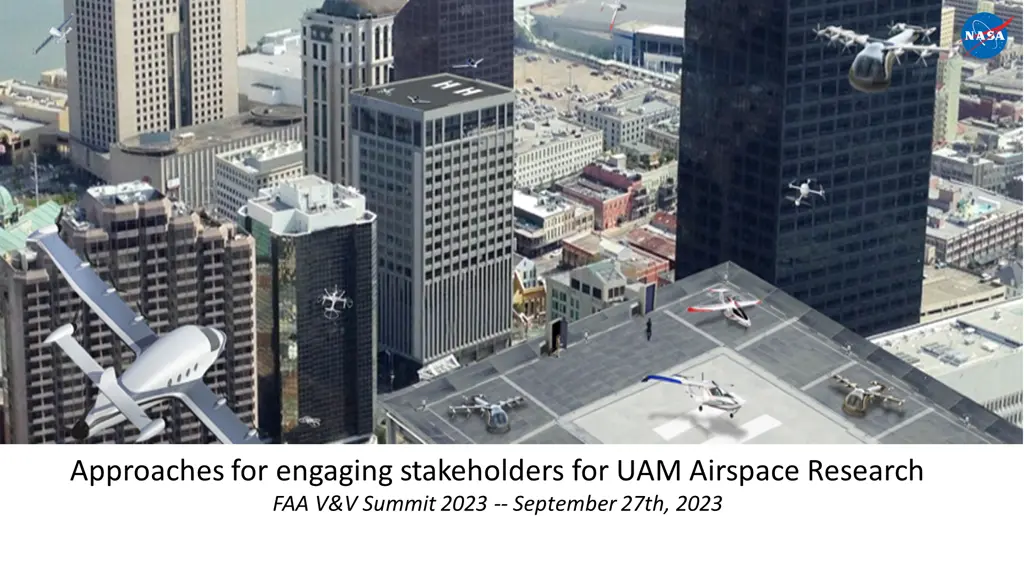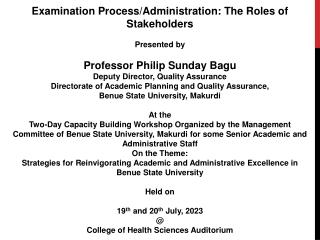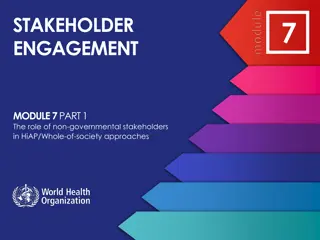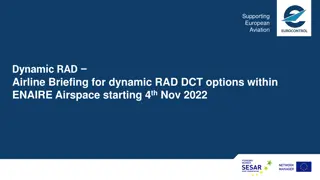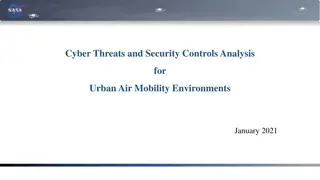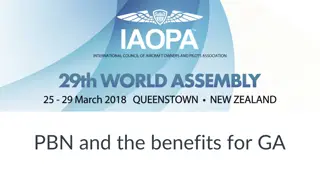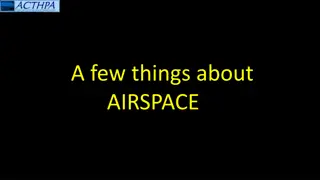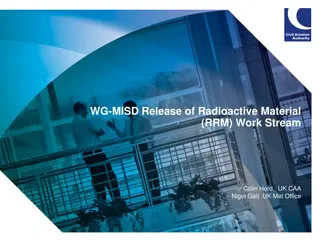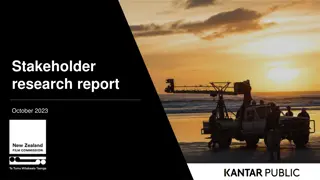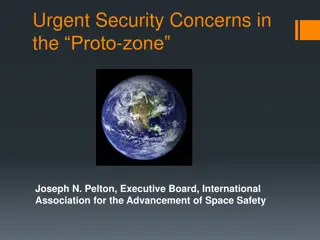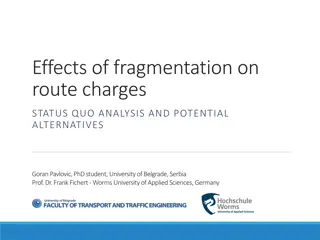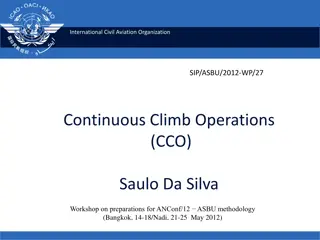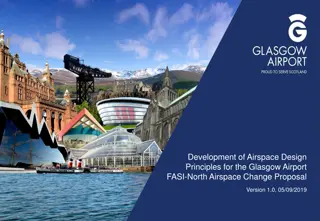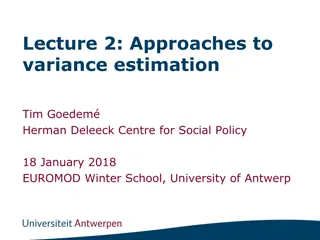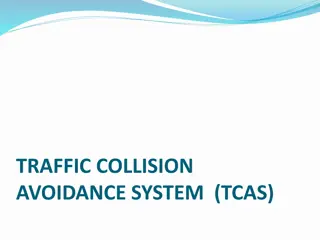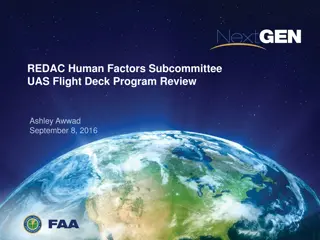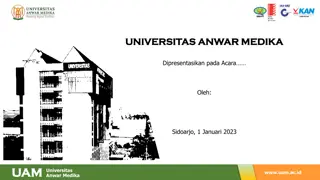Approaches for engaging stakeholders for UAM Airspace Research
The challenges and approaches for engaging stakeholders in UAM airspace research at the FAA V&V Summit 2023. Gain insights into stakeholder convergence and UAM initiatives.
Download Presentation

Please find below an Image/Link to download the presentation.
The content on the website is provided AS IS for your information and personal use only. It may not be sold, licensed, or shared on other websites without obtaining consent from the author. Download presentation by click this link. If you encounter any issues during the download, it is possible that the publisher has removed the file from their server.
E N D
Presentation Transcript
Approaches for engaging stakeholders for UAM Airspace Research FAA V&V Summit 2023 -- September 27th, 2023
Outline Challenges to Stakeholder Convergence UAM Airspace Background Approaches we have taken Q&A 2
On Demand Airport Transfer Cargo Delivery Cross Metro Transfer Regional Network Air Ambulance Fleet Operations Urban Air Mobility (UAM) Missions Regional Network Cargo Delivery On Demand Airport Transfer Air Ambulance Fleet Operations Cross Metro Transfer Not for public release. Do not distribute without further approval. 3 Image credit: FAA/NASA
UAM Airspace Background UAM Airspace Subproject, under NASA's Air Traffic Management eXploration (ATM-X) Project, was established in 2017. Conduct research to enable scalable operations and integration of UAM into the National Airspace System (NAS) Airspace system should be ready when vehicles are ready 2024+: Validated Research Convergence 2020-2023: Phase 2 Applied Research UAM gaining wider acceptance; Stakeholders are many but more defined 2017-2019: Phase 1 Exploratory Research UAM gaining initial acceptance; Stakeholders are many UAM as an emerging idea; lots of unknowns, key stakeholders are vehicle manufacturers Time 4
Relevant Stakeholders for UAM Airspace... Many! Many stakeholders, each with their unique perspectives and concept of operations Airspace Mgmt Fleet Mgmt Govt Agencies Current NAS Users Source: Wisk Stake- holders Vehicle Local Govts Vertiport Mgmt Source: Helicopter Association International Infra- structure Source: FAA 5
Relevance of Stakeholder Convergence to NASA Strategic Implementation Plan (SIP) NASA SIP includes three mega-drivers, one of them is technology convergence Stakeholder engagement is about people convergence People convergence need to come before processes and technology can converge Images credit: NASA Reference: NASA Aeronautics Strategic Implementation Plan https://www.nasa.gov/aeroresearch/strategy 6
Challenges for Convergence Different timelines and priorities; Industry wants to move faster than regulatory bodies Stakeholders are looking at the problem differently from their own perspective Priorities Concept of Operations Terms Even definition of UAM was not clear Research organization like NASA can help bring stakeholders together Common Reference Framework 7
Approaches we have taken (2020-2023) Apply V&V with agility with two key elements: 1. Common reference framework 2. Learn, update, repeat Rather do quickly, smaller efforts, more times. Could be asynchronous learning, bring the learnings back to the framework learn Workshops Common Reference Framework Integrated Testing with FAA Automation Integrated Testing with Industry Prototypes learn learn Human-In- The-Loop Sims learn 8
Common Reference Framework A maintainable framework that describes: the progression the roles of stakeholders the system and its components A living document used by NASA, to describe how research informs progression of UAM capabilities ultimate, it is for all (public and private) stakeholders synchronizes information for different validation activities (left of the V) as we learn from activities, assimilate new information into the framework (right of the V) A tool for interfacing with many different stakeholders starting point for discussions and workshops digital engineering allows for information sharing 9
Integrated Testing with FAA Automation Why is there a need for this? Scaling to the limit without fundamentally changing the NAS Fundamental shift for FAA and industry FAA Tower Lab How does this bring stakeholders together? NASA can work with both FAA and industry NASA brings early prototypes to the operational systems, can identify weak or erroneous assumptions sooner Industry benefits from those lessons to develop their prototypes and see how they interact with FAA existing automation NASA has decades of experience, research on AAM concepts bringing those languages with those of FAA's. Increasing FAA's readiness/awareness of technologies FAA Automation Fleet Managers UAM Pilots 10 Images credit: FAA/NASA
Integrated Testing with Industry Prototypes Why is there a need for this? Relatively new industry Key players have mixed level of experiences with traditional Air Traffic Management (ATM) Building this cooperative traffic management network requires industry to integrate with each other If each company build their own prototypes, unlikely they would interoperate How does this help bring stakeholders together? NASA fills in that knowledge space in ATM, wherever needed, when working with industry to develop common requirements NASA provides the catalyst to jump start industry (e.g., initial prototypes, draft community-based rules) Industry prototypes are validated against a set of common, interoperable requirements UAM Notional Architecture Source: FAA NextGen UAM ConOps v1.0 11
Human-In-The-Loop (HITL) Simulations Why is there a need for this? Humans still play key roles in this progression How does this help bring stakeholders together? Invites Air Traffic Controllers (ATCs) to participate and be part of the early engineering process Allows ATCs to see themselves in a familiar environment and get their head wrapped around the procedures Early buy-in, share with their peers, more convergence Helps other stakeholders understand scalability possibilities without additional FAA automation Pseudo-ATC Positions Pseudo Pilot Positions 12 Images credit: FAA/NASA
Q&A 13
